Once you’re hooked on the fishkeeping hobby, you’ll most likely want to try raising fish in your home aquarium. Over the years, I’ve had success in breeding many different species and it certainly adds a fun dimension to your hobby.
So, what are the easiest fish to breed in captivity? Do you need any specialist equipment for raising fish? And what do you feed fry?
Keep reading to learn how to breed fish successfully in your home aquarium and to discover the 17 easiest fish species to breed!
17 Easiest Fish To Breed In Aquariums
Fish breed by either giving birth to fully-formed live fry or by laying eggs.
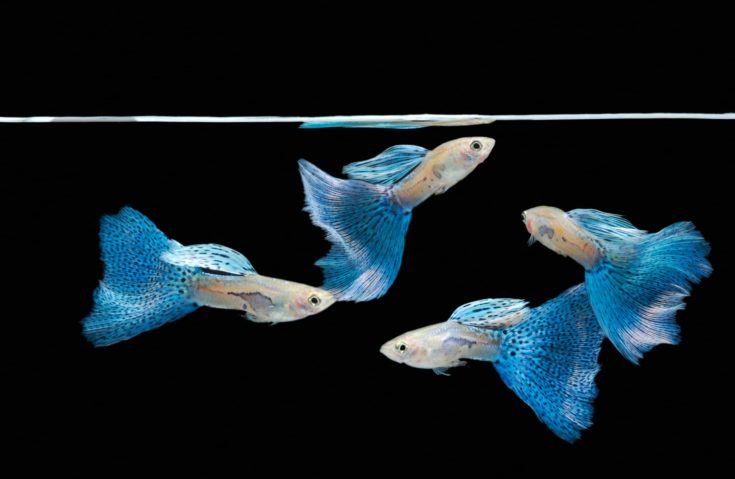
Easiest Live Bearing Aquarium Fish To Breed
Livebearers are generally the easiest to breed, as they just do what comes naturally with very little help from their keepers! So, let’s take a look at these easy-to-breed livebearers.
1. Guppies
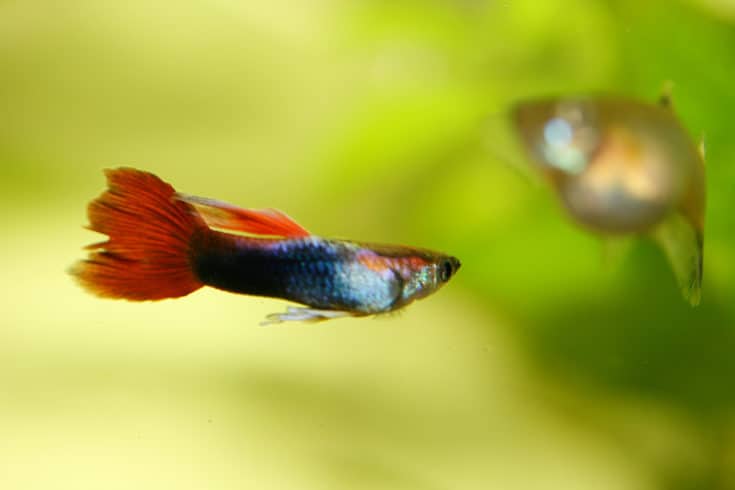
Scientific Name: Poecilia reticulata
Experience Level: Easy
Max Size: 1.5 to 2 inches
Temperament: Peaceful
Min Tank Size: 10 gallons
Guppies are probably the easiest fish to breed in the aquarium. These fish are also called Millions fish, which gives you a clue as to their prolific breeding habits!
And since a female Guppy can store sperm for up to a year and produce fry without mating, you could breed Guppies without the need for males!
2. Platys
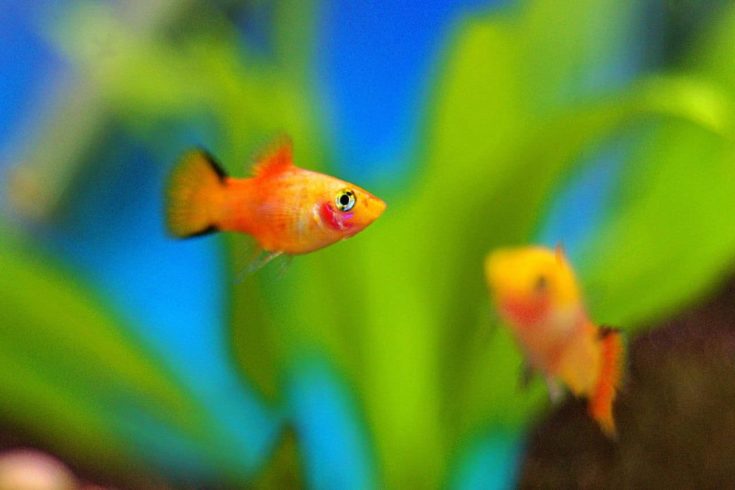
Scientific Name: Xiphophorus maculatus
Experience Level: Easy
Max Size: 2 inches
Temperament: Peaceful
Min Tank Size: 15 gallons
Platys are beautiful, colorful little fish that are perfect for a community tank. They also breed without any special conditions or intervention from you. Provide plenty of lush planting so that the fry can hide away until they’re big enough not to be lunch for the adults!
3. Mollies
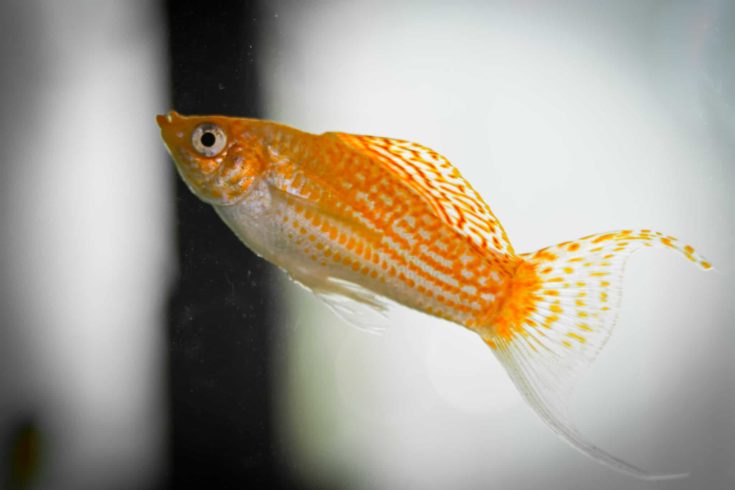
Scientific Name: Poecilia sphenops
Experience Level: Easy
Max Size: 2 to 4 inches
Temperament: Peaceful
Min Tank Size: 20 gallons
Mollies are gorgeous little fish that belong to the same family as Guppies. There are several varieties of Mollies, including rotund Balloon Mollies, elegant Sailfin Mollies, and brightly colored Common Shortfin Mollies.
Be careful not to overcrowd these fish, or the males can become nippy during spawning.
4. Four-Eyed Fish
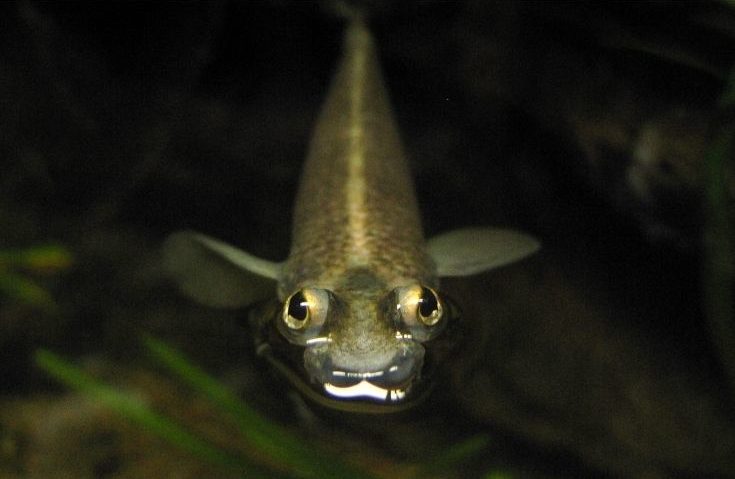
Scientific Name: Anableps
Experience Level: Intermediate
Max Size: up to 12 inches
Temperament: Peaceful
Min Tank Size: 55 gallons
Four-eyed fish are a very unusual species that is rarely seen in the aquarium. These fish can mate on one side only. “Left-handed” males mate with only “right-handed” females and vice versa. Who knew?
5. Swordtails
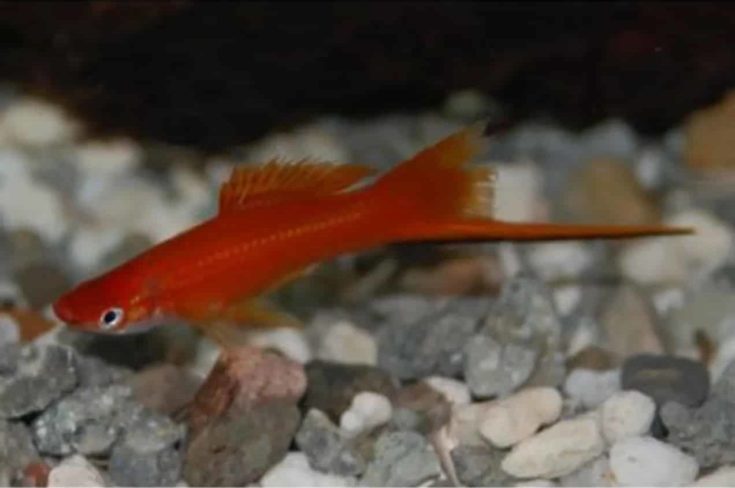
Scientific Name: Xiphophorus hellerii
Experience Level: Easy
Max Size: up to 5 inches
Temperament: Peaceful
Min Tank Size: 20 gallons
Swordtails are closely related to Platys, and they look very similar, except that the male Swordtail has a long, swordlike extension to his lower caudal-fin lobe. These fish breed readily, producing up to 60 fry in each spawning.
6. Butterfly Splitfin
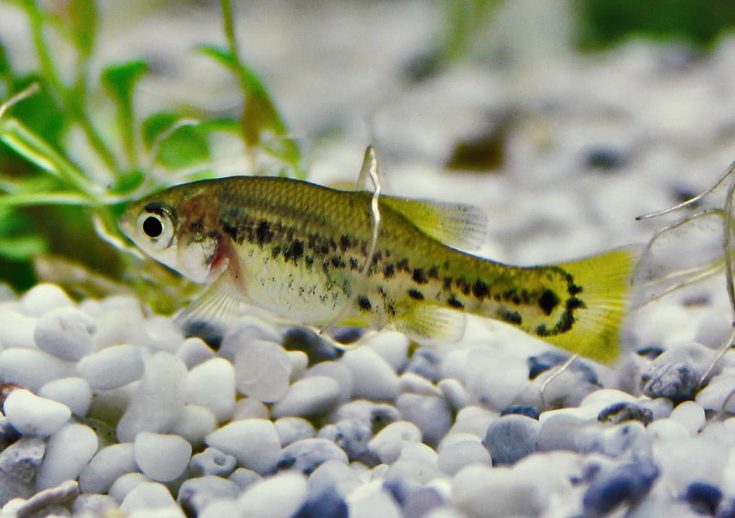
Scientific Name: Ameca splendens
Experience Level: Easy
Max Size: up to 4 inches
Temperament: Peaceful
Min Tank Size: 20 gallons
Butterfly Splitfins are critically endangered in the wild environment and are very rarely seen in the hobby. These fish are found in the protected area of Jalisco, Mexico, where they live in freshwater wetlands. Unfortunately, numbers are decreasing, largely due to habitat destruction.
7. Mosquitofish
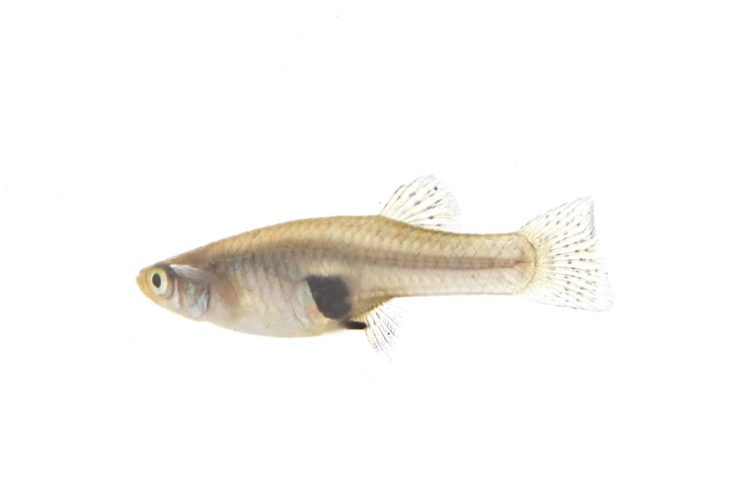
Scientific Name: Gambusia affinis
Experience Level: Easy
Max Size: up to 1.5 inches
Temperament: Generally peaceful but can be nippy with long-finned tank mates
Min Tank Size: 20 gallons
Mosquitofish are rather drab to look at, but they can make an interesting species to keep and breed in your aquarium or outdoor pond, especially if you have a mosquito problem. In some parts of the world, these fish are farmed specifically for the purpose of eating and controlling, you guessed it, mosquitoes!
8. Least Killifish
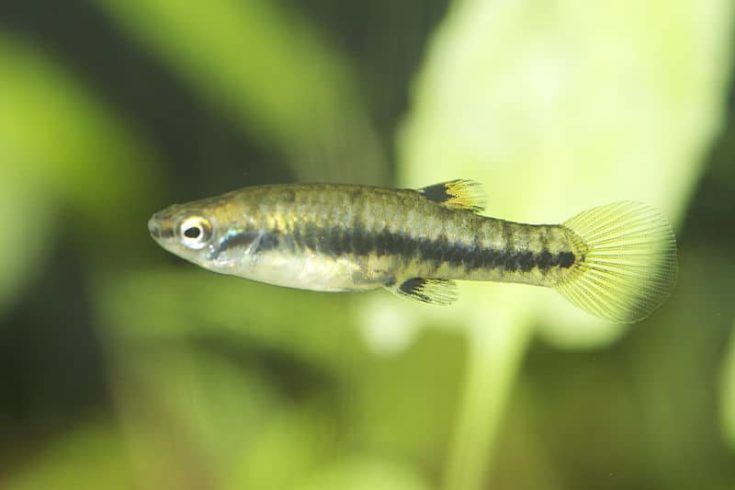
Scientific Name: Heterandria formosa
Experience Level: Easy
Max Size: up to 1.4 inches
Temperament: Peaceful
Min Tank Size: 10 gallons
These tiny little fish make a sparkling display when kept in a small group, and they make the perfect candidate for a nano tank. Killifish are very easy to breed, spawning readily in the aquarium. Keep a ratio of two females to one male for a harmonious tank.
Easiest Egg Laying Fish To Breed At Home
Egg layers can be trickier to breed at home, simply because you need to take steps to prevent the other residents in the tank from eating the eggs before they have a chance to hatch.
However, here are the easiest egg-layers that you can have fun breeding at home.
9. Zebra Danios
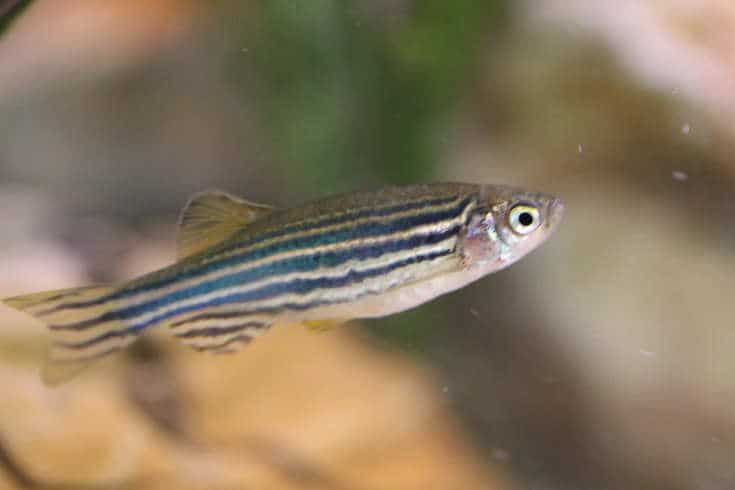
Scientific Name: Danio rerio
Experience Level: Easy
Max Size: 2 inches
Temperament: Peaceful
Min Tank Size: 10 gallons
Zebra danios make an excellent addition to a peaceful community setup. These are active little fish that make a sparkling display when swimming in a school. Unlike most fish species, Zebra danios are monogamous, remaining loyal to their partner for their whole life.
10. Kribensis Cichlids
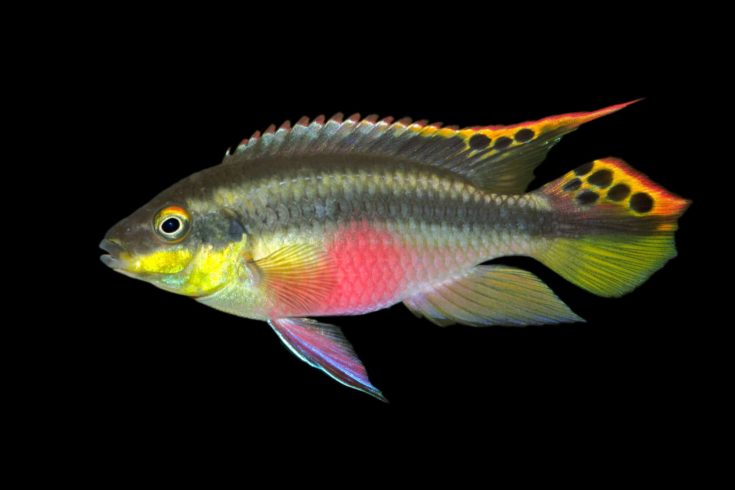
Scientific Name: Pelvicachromis pulcher
Experience Level: Easy
Max Size: 3 to 4 inches
Temperament: Peaceful
Min Tank Size: 20 gallons
Kribensis are fascinating creatures and one of my favorite tropical aquarium fish. The eggs are laid in a cave or scrape in the substrate made by the female. When the eggs hatch, the tiny fry are guarded by their parents as they swim around the tank together as a family group.
11. Firemouth Cichlids
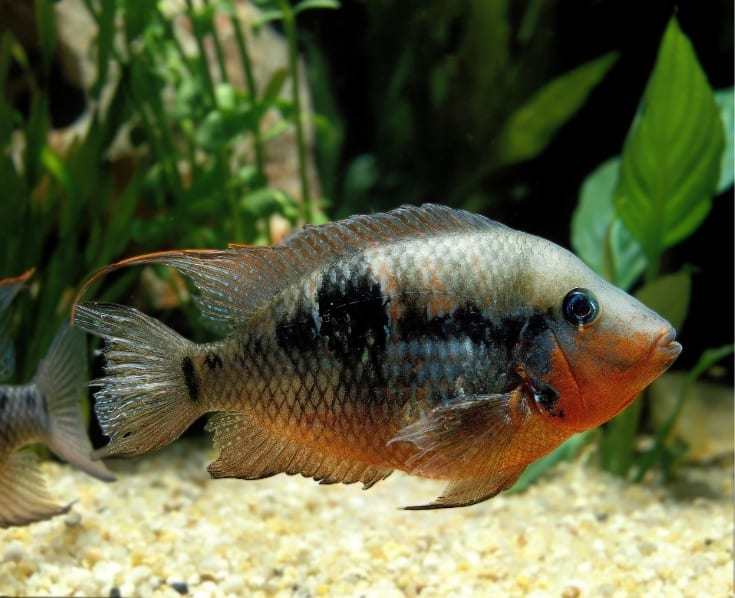
Scientific Name: Thorichthys meeki
Experience Level: Easy
Max Size: 7 inches
Temperament: Generally peaceful
Min Tank Size: 30 gallons
Firemouth cichlids are relatively easy to breed in the home aquarium. However, males become very territorial and aggressive toward their tank mates during the breeding season, so a separate spawning tank is essential.
12. Rosy Red Minnows
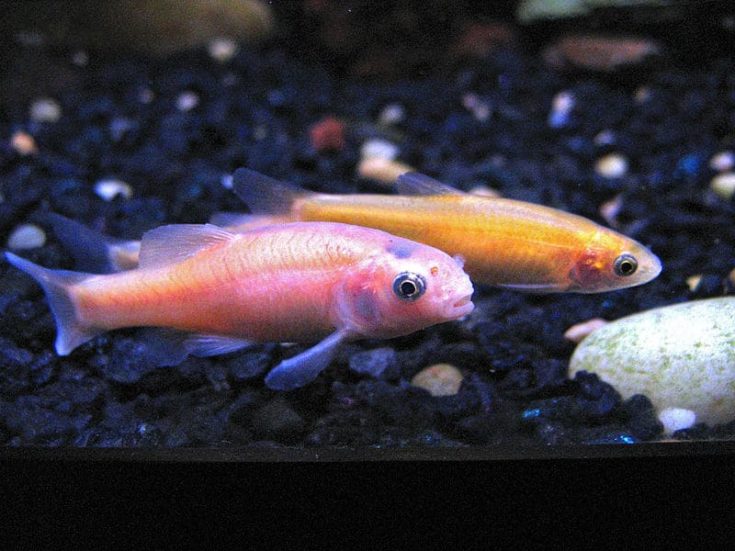
Scientific Name: Pimephales promelas
Experience Level: Easy
Max Size: 2 to 3 inches
Temperament: Peaceful
Min Tank Size: 10 gallons
Rosy Red Minnows are often overlooked as an aquarium fish species, which is a shame, as these are beautiful, peaceful fish. You can also keep these minnows in an outdoor pond with Koi and goldfish.
13. Rosy Barbs
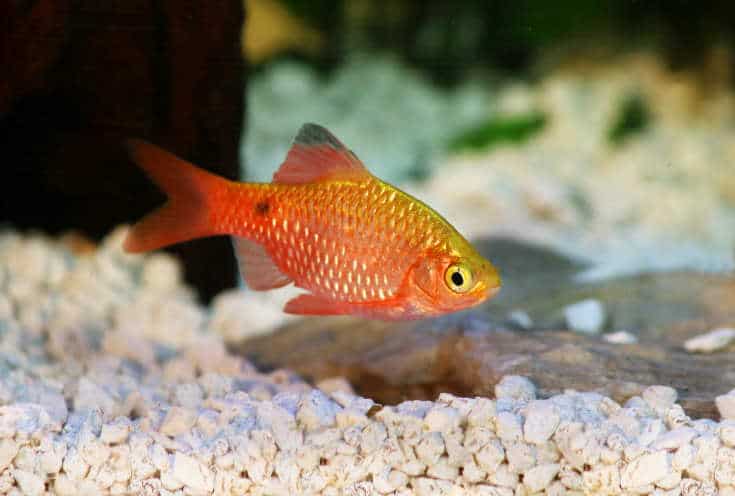
Scientific Name: Pethia conchonius
Experience Level: Easy
Max Size: up to 6 inches
Temperament: Peaceful
Min Tank Size: 30 gallons
Rosy barbs are quite easy to breed, but you do need to put them in a specially set up spawning tank. These sparkling fish need pristine, shallow water just a few inches deep in which to spawn and dense planting.
14. Convict Cichlids
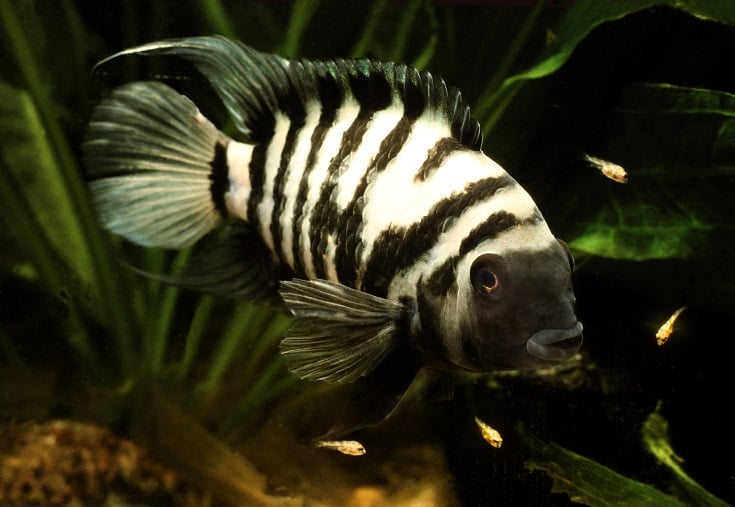
Scientific Name: Amatitlania nigrofasciata
Experience Level: Easy
Max Size: up to 6 inches
Temperament: Peaceful
Min Tank Size: 30 gallons
Convict cichlids are easy to breed. However, the fish form breeding pairs and will attack any other fish in the tank, often inflicting fatal injuries or harassing the interloper until it dies. That being said, these feisty fish are very attentive, caring parents.
15. Killifish
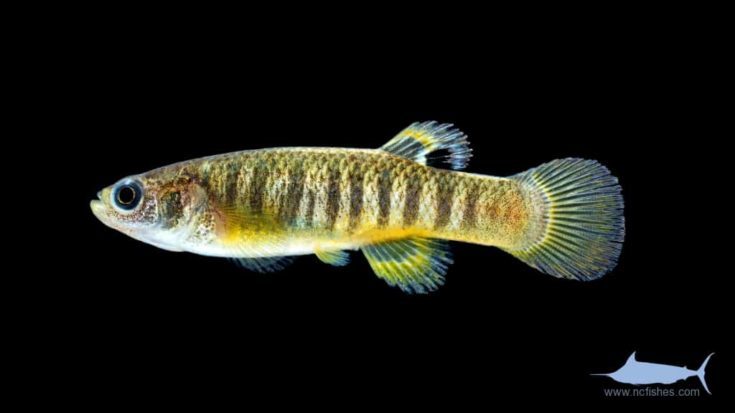
Scientific Name: Fundulus heteroclitus
Experience Level: Easy
Max Size: up to 2.4 inches
Temperament: Peaceful
Min Tank Size: 20 gallons
Killifish are fun to keep and easy to breed. However, you can only keep one male with a harem of females, as males can become aggressive toward other similar-looking fish that they view as competition for breeding rights.
16. White Cloud Mountain Minnow
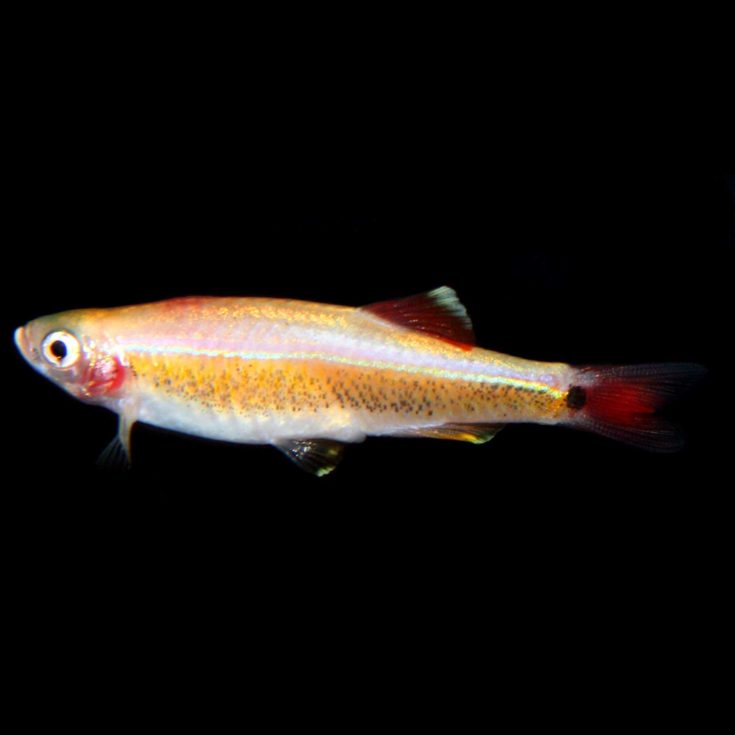
Scientific Name: Tanichthys albonubes
Experience Level: Easy
Max Size: up to 1.5 inches
Temperament: Peaceful
Min Tank Size: 10 gallons
White Cloud Mountain minnows are hardy temperate freshwater fish that can live in cold water as well as cooler tropical tanks. Fortunately, these minnows breed readily in captivity since they are practically extinct in their wild habitat because of tourism and pollution.
17. Steel-Blue Killifish
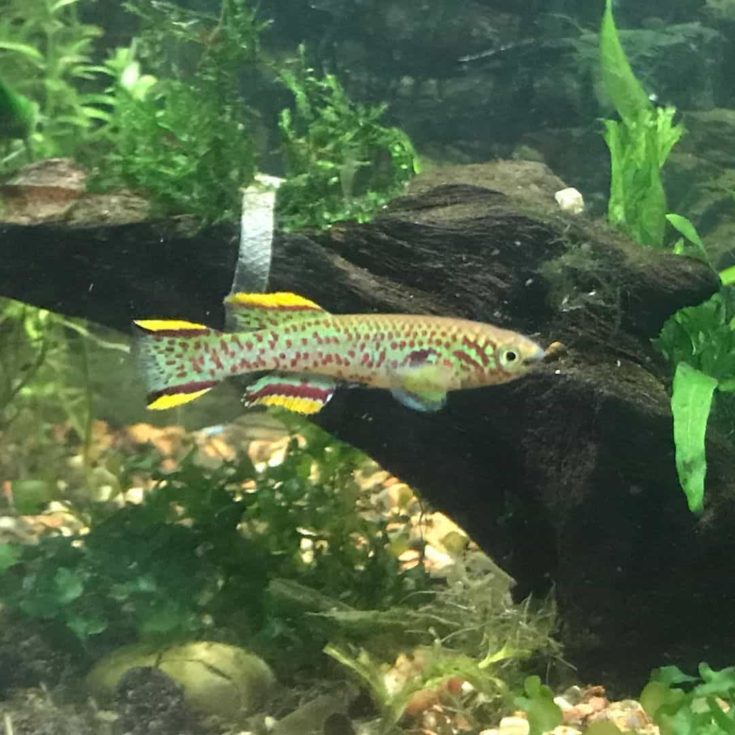
Scientific Name: Fundulopanchax gardneri
Experience Level: Easy
Max Size: up to 2.6 inches
Temperament: Peaceful
Min Tank Size: 10 gallons
Steel-blue killifish are extremely attractive, lively fish that can be raised quite easily in a separate spawning tank. Be sure to fit a tightly fitting lid on the spawning tank, as these acrobatic fish are very accomplished jumpers.
How To Care For Your Breeding Fish
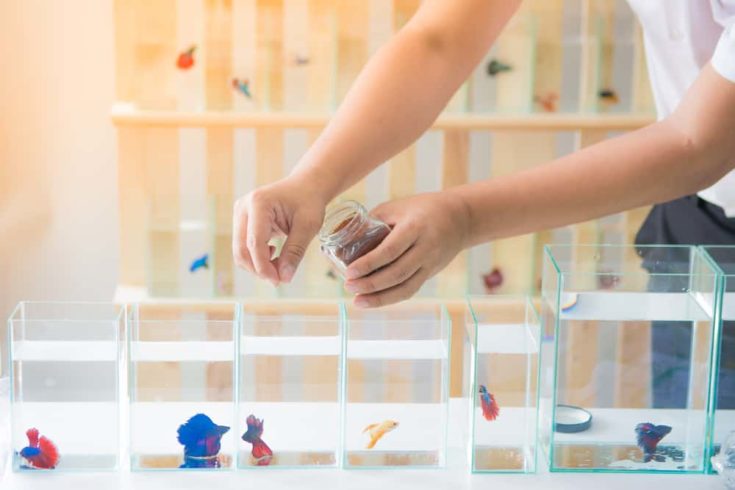
It’s usually best to set up a spawning or breeding tank for your fish. That way, you can create the ideal environment for the fish and remove the parents once the fry are born so that they don’t get eaten by mom and dad!
The ideal spawning environment varies depending on the fish species and the nature of their breeding process. So, before you start, do plenty of research about your fish, and ask lots of questions at your local fish store and via online forums. Enthusiastic hobbyists are always ready to offer advice to newbies to fish breeding!
Water Parameters
It goes without saying that the tank must be clean and properly cycled so that the water is healthy for the fish. Cleanliness is especially important for a spawning tank, as any bacteria or parasites would quickly kill off the fry and render any eggs infertile.
You also need to ensure that the water temperature, pH levels, water hardness, and salinity (if applicable) are correct for the fish you’re planning on breeding. Note that you often need a slightly higher water temperature than usual to trigger spawning that usually takes place in spring when the weather and water warm up.
Hiding Spots
Many fish like to hide away as part of the breeding ritual. So, you need to provide plenty of caves and lush planting. For example, Kribensis like to produce their eggs inside a cave or overturned plant pot, only emerging once the fry has hatched.
Space
Some fish species can become quite aggressive during spawning. So, you need to make sure that there’s plenty of space in your spawning tank so that the fish can avoid each other when necessary.
A roomy tank also has a larger surface area and, therefore, better levels of diffused oxygen in the water, which is necessary for healthy eggs and fry.
Healthy Fish
Before you can expect your fish to breed, they must be in good health and free from diseases and parasites. If you’re buying fish especially for breeding purposes, quarantine them for at least ten days before introducing the fish to the spawning tank.
Many professional fish breeders like to separate the male and female fish for a few weeks prior to bringing them together for breeding. It’s thought that makes the fish more receptive to each other and more likely to breed.
Feeding
In the weeks before breeding, feed the fish a high-protein diet that contains live food. That helps to bring the fish into prime condition for spawning and makes successful breeding more likely.
While the fish are spawning, you should feed them several times each day so that the fish have the energy they need for breeding.
Plan
Before you begin your fish breeding project, make a plan so that you have everything you need in place. The last thing you want is to find yourself scrabbling around for a fish net or somewhere to put your newly hatched fry.
Filters
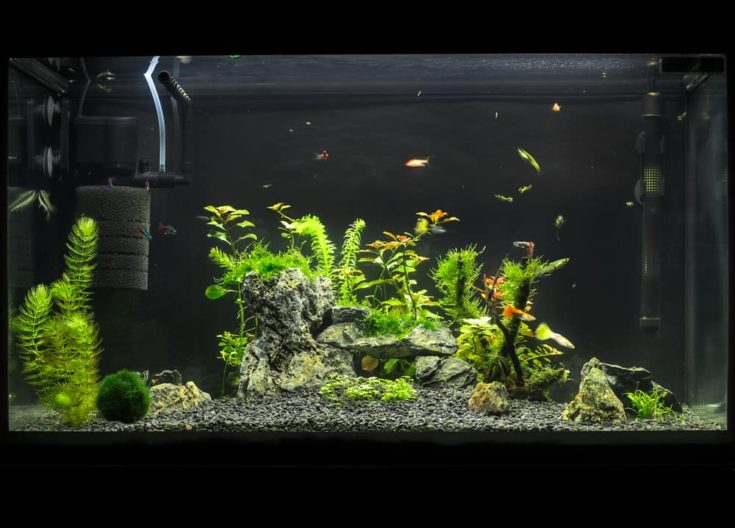
The importance of clean, well-filtered water in the spawning tank cannot be overstressed.
You need an efficient filtration system with a GPH rate of at least four times the volume of your tank. You’ll also need to cover the filter intake with a sponge so that the fry doesn’t get sucked into the pump. Alternatively, you could use a sponge filtration system.
As well as maintaining the filter media, you need to carry out frequent water changes, ideally, every day, to keep the water super-clean and fresh.
Can You Make Money Breeding Fish?
Many hobbyists wonder if you can make money from breeding fish.
Well, that all depends on the fish species you choose to breed. For example, if you can successfully breed very unusual, rare colored bettas, then you could possibly make some money by selling your betta fish online.
However, most of the aquarium fishes that are very easy and fastest to breed aren’t especially valuable. And by the time you’ve totted up the costs of housing and feeding the fish, buying all the kit you need, etc., you won’t make much profit.
Tips For Breeding Fish For Profit
If you want to try to make a profit from breeding fish in your home aquarium, here are a few top tips to help you turn a dollar or two from your hobby.
Breed Fish That Are In High Demand
There’s no point in breeding fish that no one wants. So, you need to do some market research to find out what fish species are in great demand.
If you raise fish that people are clamoring to buy, you’ll have a ready market for your fish, and you stand to make a profit.
Breed Expensive And Rare Fish
Although it sounds obvious, the best way to turn a profit from your fish breeding activities is to try to raise fish species that are very expensive and rare.
You will undoubtedly find it harder to breed these fish, and you may not produce very many of them, but you will make more profit, which will make the effort worth it.
Breed Live Fish Food
As mentioned above, you will want to feed your breeding stock plenty of high-quality live food, and that can get expensive. So, you can save yourself quite a lot of money by raising your own live food.
That not only saves you spending your cash on expensive live food from your local fish store, but it also means you will know that the live food you’re giving your fish is free from parasites and diseases that could jeopardize your breeding operation.
In Conclusion
Did you enjoy our guide to breeding fish in the home tank? If you found it helpful, please share!
Raising your own fish is a fun and fascinating element of the hobby that beginners can enjoy, too. To get started, choose from our list of fish that are easy to breed, do plenty of research so that you understand the perfect conditions that the fish need for spawning, and set up a spawning tank.
If you have any questions or you’d like to tell us about your fish breeding journey, use the comments box below.